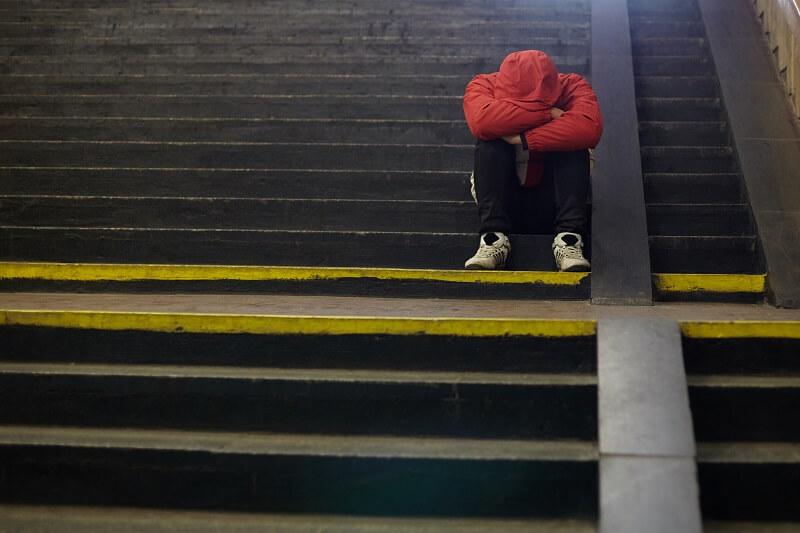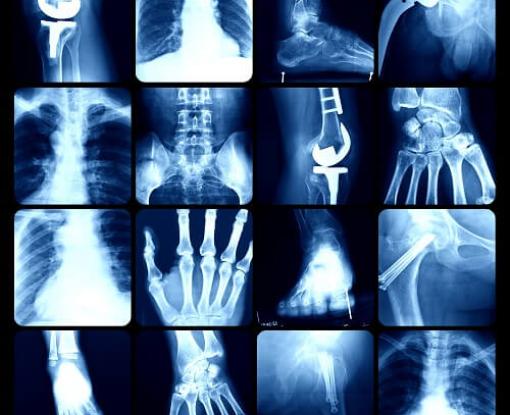Unaccompanied minors facing legal obstacles

This week the situation at Klein Kasteeltje remained unchanged. Around thirty men were granted access to Klein Kasteeltje every day but everybody else was turned away with no information other than that they should return the following day. This meant that between one hundred and two hundred men were left outside with nowhere to spend the night. What is even more frustrating is that out of the small number of men who did manage to get inside Klein Kasteeltje, the majority were sent outside on the street again and told to send an email to join the infamous waiting list!
The fact that people are still being left on the street creates an extremely tense environment. It is especially difficult, as I mentioned last week, when people bring up the differential treatment of Ukrainian refugees and look to us for an explanation. Of course, we do not have one. What was even more worrying this week was that we saw the reintroduction of triaging minors. I understand that there are a lot of men over 18 who are trying to join the minor line in order to get inside, but this does not change the fact that judging minors based on their appearance is unfair and puts vulnerably youth at risk. This week alone we met several minors between 16 and 18 who had documents, including passports, stating their age 16 or 17. Looking at these boys, it would be impossible to tell at first glance whether they were 16 or 20 which is why letting everybody who claims to be a minor inside and examining their individual case is of such importance.
It is estimated that tens of thousands of unaccompanied minors have entered the European Union over the last few years. Unaccompanied minors often face legal obstacles because they cannot prove their age. This can arise for several reasons – they may come from a State where births are not always registered, they may have lost their documentation, or the immigration authorities may question the validity of their document. In these cases, it is paramount that organisations such as IBZ assume that everybody who claims to be a minor is under 18, until there is concrete evidence that suggests otherwise. If not minors could be forced to spend weeks living on the streets in Brussels without access to social assistances, medical care or adequate food and clothing. The are also more likely to turn to other people they meet on the streets for advise on where to go and whether they should apply for asylum instead of consulting one of the trained guardians who are appointed to recognised minors.
"It is estimated that tens of thousands of unaccompanied minors have entered the European Union over the last few years."
Denying unaccompanied minors the extra protections afforded to them by law and placing them in situations which are contrary to the best interest of the child can have devastating consequences for the physical and mental wellbeing. In the EU, poor coordination between immigration and child protection services has contributed to an increase in child trafficking. Unaccompanied minors fall into trafficking for different reasons but research has shown that children who leave centres are more vulnerable to trafficking. It is thus easy to conclude that being denied their right to reception and being left without a safe to sleep increases the risk. According to Missing Children Europe, one in five unaccompanied minors who were registered in a reception centre in 2015 disappeared less than a day after their arrival at the centre. Only 27.1 % of these minors were found by local authorities – a significantly lower percentage than the average percentage of national children found in most EU member states. If the minors information is never registered in Belgium, the chance of them being reported as missing and later found is presumably even lower.
Those who are denied access to the reception system do not normally have many options. If they do not have family or friends in Belgium, the two most appealing options are probably trying find work or continuing their journey to another country. Working in the black-market leaves minors vulnerable to labour exploitation and they could even be trafficked. Similarly, if they chose to engage a smuggler to try continue their journey towards another State which will provide them with better protection and opportunities they may also fall victim to human trafficking. If the minor does not have enough money to pay the smuggler upfront they may arrange a deal whereby the minor has to pay ‘in kind’ – through forced labour or sexual exploitation. This kind of exploitation often depends on the local people buying services offered by the trafficked minors which highlights the need to better educate border and migration officials, who often fail to recognise forged documents or to adequately follow up on cases involving unaccompanied minors.
"Working in the black-market leaves minors vulnerable to labour exploitation and they could even be trafficked."
While triaging minors is our biggest concern at the moment, it is also worth mentioning that Belgium’s process for determining the age of minors also leaves a lot to be desired. Ideally the State should accept the age written on a minor’s documentation assuming the documentation is not considered fake, however, in Belgium this is seldomly the case and minors are often subjected to unnecessary medical examinations. Article 25(5) of the EU Recast Asylum Procedures Directive permits States to use medical examinations in order to determine the age of asylum seekers, however, Article 21.5 of the Recast Proposal of the Asylum Procedures Directive indicates that States must opt for the least invasive method possible. This suggests that Belgium should take into consideration other techniques such as maturity assessments carried out by trained psychologists and social workers. At the same time, they should take into consideration the plethora of research which suggests that medical assessments may in fact be less accurate than verbal assessments.
Not all medical interventions that are acceptable in healthcare, are ethical when they are used for forensic purposes. When a medical intervention used in an age assessment is intrusive and poses a potential health risk, as is the case with the x-rays, used in Belgium, which use ionising radiation, the concept of proportionality as well as the principle of the best interest of the child must be considered. If an assessment is mildly invasive but not accurate then it should not be considered proportionate.

The method preferred in Belgium is an x-ray of the minor’s wrists in order to determine their bone development.
In a radiological age assessment, the developmental features of an individual of an unknown age are compared to the average developmental features of a reference group. New data suggests that differences is nutrition, healthcare and lifestyle across the world means that different populations develop at different rates. This means that radiological age assessments are only accurate when the developmental features of the individual of unknown age are compared to the average development features of a reference group from their own population. The fact that many asylum seekers come from States that do not have functioning bureaucracies makes it almost impossible to obtain the necessary data needed to create a reference group which would allow for a scientifically accurate assessment.
A study at Karachi hospital in Pakistan examined the wrists of 889 children and concluded that the Greulich-Pyle atlas, which is the standard reference text used in the EU, could not accurately assess the age of Pakistani children. In 2014 a second study by Mansourvar supported this conclusion and asserted that the Greulich-Pyle atlas could not adequately assess the age of Asian or African-American populations. An additional study by Olze et al confirmed that the developmental features of Mongoloids, Caucasians and Africans were all different. Additional research has also shown that PTSD can lead to premature psychological aging while maltreatment and abuse can lead to the early onset of puberty. This means that minors coming from a conflict zone are likely to age prematurely. These are the very children who are most likely to be seeking international protection in Belgium.
The UN Committee on the Rights of the Child noted noted that there was evidence to ‘suggest that X-ray evidence lacks precision and has a wide margin of error, and is therefore not suitable for use as the sole method for assessing the chronological age of a young person who claims to be a minor and who provides documentation supporting his or her claim’ in a case called R.K v Spain. If the UN committee on the Rights of the Child do not support this method we must really ask ourselves why Belgium and other EU member states still support it?
I hope that as the situation starts to improve at Klein Kasteeltje, we will see an end to triaging. I am hopeful that we will see this change as early as next week, however, I am not so hopeful that we will see the end of medical age assessments any time soon.
Sources
- The story of Europe’s 210,000 unaccompanied minors seeking asylum – EURACTIV.com
- Unaccompanied minors at risk: preventing child trafficking | EUCPN
- age assessment (europa.eu)
- AgeAssessmentChildrenMigration.indd (coe.int)
- Detriment of the Doubt: Age Assessment of Unaccompanied Asylum-Seeking Children (ecre.org)

